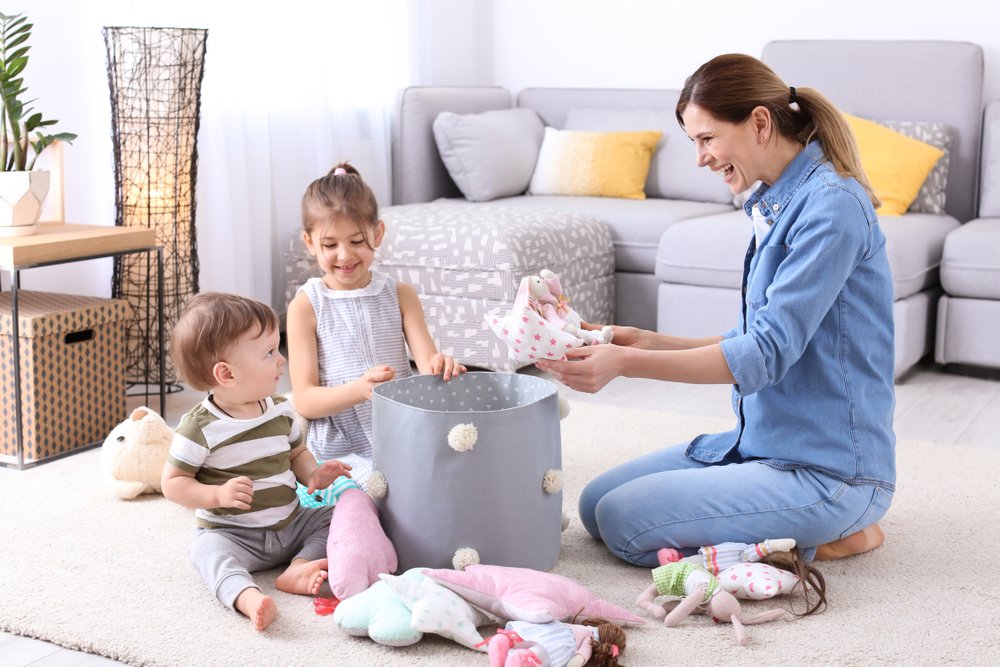Key points:
1. Children’s involvement in household cleaning promotes empathy and social connections.
2. Providing kids with their own cleaning tools makes cleaning enjoyable for them.
3. Cleaning activities offer speech-enhancing opportunities, like following directions and object identification.
4. Involving toddlers in spring cleaning fosters a sense of responsibility and learning through engagement.
New research suggests that children who take part in household cleaning are more empathetic, make better connections, and are more willing to help others! Most little ones actually love to clean, especially if they have their very own tools. Plus, there’s an added bonus! It is super simple and fun to make cleaning speechy. It is the perfect opportunity to allow your child to follow directions, identify objects, sort, find items you describe, and so much more! Since spring is finally here, let’s chat about some ways that you can involve your toddler in the spring cleaning!
- Follow the Cleaner
Have you ever noticed that your toddler loves to wipe up spills or sweep up a mess? This is actually a wonderful developmental milestone that we see as early as 18-months. Kids love to participate in daily routines –think: toddler see, toddler do! It’s best to set up your little one with their own tools and assign a job. Maybe they get to wipe the kitchen table with their special sponge and spray bottle (*with kid-safe cleaning solution of course). You can also take turns sweeping –mommy can sweep with the big broom and your tiny friend can use their own mini broom. You can make it even speechier by providing a challenge! You can sweep from the rug to the door; sweep to the left; spray 3 times and then wipe; and so on!
- Kitchen Decisions
I know the kitchen is my least favorite place to clean, so having a partner always helps! We often make what I like to call “kitchen decisions” when cleaning. We decide if food in the fridge has to be thrown out, if you can give any to the birds, if it needs to be frozen or cooked. No matter which path you take, they all lead to amazing speech goals! You can create the rules in any way you’d like. The important piece is to talk about how you make the decisions, ask and answer questions, and provide directions for your child to follow. Each decision also leads to a beautiful new task. For example, feeding the animals outside and cooking together are both perfect opportunities to spend speechy time together!
- The Sorting Hat
Kids love props, so it is to your benefit here to use a hat! Assign a particular hat in the house as ‘the sorting hat’ and then explain the rules of the magical item. My rules are: once you wear the hat, you have the power to sort any and all objects in the house! Sorting is another awesome developmental milestone for our tiny friends and like all great skills, it requires practice. Your sorter can start by organizing their drawer in the kitchen (i.e. cups, bowls, plates get sorted and stacked, etc.) Or you can assign 2-5 toy items that require organizing. I like to assign bins and then let the magic begin! Example: line up the bins and assign one for LEGOs, one for automobiles, one for dolls and accessories, etc.
- Dress Up, Not Down
Who doesn’t love dressing up? Have your little one model the clothing items that you believe are too small. Make a little runway, have them do a fun dance or action, and then make a group decision if it is a keeper or a leaver. It’s really easy to make this activity speechy! You can ask your tiny friend to “try on something blue,” “do 5 jumping jacks in the grey pants,” “skip down the runway,” etc. A mirror is also helpful to allow a child to visually understand if something is “too small” or “too tight.”
- Make Room for the New
This is a little lucky charm that my parents used when we were little! Two or three times per year we would make room for the new. You make piles of clothes that don’t fit and toys that you have outgrown. If the items are in great shape, then you donate them to others in need. You can schedule a pick up or drive or walk together to a local donation bin. Allow your little one to be a part of the selection process and talk about the other kids who will get to use those toys or wear those clothes. This is a lovely life lesson for all children! At first, the motivation to get rid of the old will be fueled by getting new stuff. However, with time and practice you will be building an empathetic, understanding, and helpful little person!








